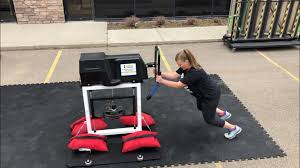PARE TESTING ALBERTA
PARE Testing (Physical Ability Requirement Evaluation) in Alberta
PARE testing (aka Physical Ability Requirement Evaluation—the standardized physical ability test for law enforcement) is used by the Sheriffs, Alberta Health Services Peace Officers, Municipal Peace officers and a number of other agencies in Alberta and across Canada. Blue Line Fitness Testing conducts practice and official PARE sessions for all agencies at our dedicated facility in South Edmonton. The Official PARE testing costs $130 and a practice PARE costs $100. All available dates can be found on our testing booking calendar or at the link below.
Medical clearance from a doctor is NOT required to run your PARE testing in Alberta with us as you will fill out a medical questionnaire when you register. Save yourself some time and money!
What is the PARE test?
The Physical Abilities Requirement Evaluation (PARE) test is an occupational test used to assess a person’s ability to perform the physical demands of police work by simulating a critical incident of chasing, controlling, and apprehending a suspect. It requires you to be in good physical shape. You need to have a fit cardiovascular system, as well as good muscular strength and endurance
How do I prepare for the PARE test?
To prepare for the PARE test your training should include both cardiovascular and strength training. These types of training can be done in combination or separately. You are encouraged to be physically active for at least 4 to 6 weeks before attempting the PARE; including:
- 3 to 5 cardiovascular training sessions with an elevated heart rate per week, and
- 2 to 3 resistance training sessions per week
- Blue Line Fitness Testing can help you prepare for your PARE test with our weekly fitness classes, personal training sessions and Open Gym practice sessions which give you an opportunity to try the obstacles out before your test at your own pace.
- Not ready to run your Official test? Try a PRACTICE test first to see where you stand fitness wise!
About the PARE (Physical Ability Requirement Evaluation) test
The evaluation consists of three stations

Station 1: Obstacle course – foot chase
This simulates proceeding to the scene of a problem or occurrence.
The first section of PARE consists of an obstacle run which the participant negotiates six times. The course is laid out in the following manner: (see diagram for course layout)
*note: the participant must complete six laps before starting the next section.
5-ft mat jump
From the start marker, follow the arrow to the second marker, turn right and jump over the 5-foot mat. The participant is assigned a five second penalty each time they touch any part of the mat.
Stairs
On landing, the participant turns left around the next marker and proceeds towards the stairs. The participant must run up and down the stairs, touching at least one step on the way up, the top platform, and one step on the way down. The participant then proceeds towards the next marker and runs back to the stairs going up and down again.
18-in hurdles
Upon landing, the particpant then moves to the next marker, turns left, jumps over two 18-inch hurdles en route to the next marker. If the participant knocks over a hurdle, they are assigned a two-second penalty.
Vault jump
The participant then runs around the left side of the marker and turns right heading towards the start marker. Before reaching the start marker, the participant must vault over a 3-ft high railing. Participants must land in control on both feet on the opposite side of the vault, then fall on either their stomach (stomach, chest, hips on the ground) or back (both shoulder blades down on the ground), alternating front or back on each lap. After each controlled fall, the participant must get up without assistance and proceed around the start marker to complete the lap.

Station 2: Push/pull section (physical control)
This simulates having to physically solve a problem or occurrence.
Upon finishing the obstacle run, the participant moves immediately to the push/pull station, which consists of a specific push/pull unit. The participant may perform this activity in the order they choose, push first and then pull, or vice versa. Since the push is more difficult to perform, it is recommended to do this activity first.
Push Activity
Upon reaching the push/pull unit, the participant grasps the handles and pushes the weight (70 lbs) off the base of the machine, then moves right or left completing a 180° arc. Six full arcs must be completed. If the participant allows the weight to drop or touch the base, the particular arc must be repeated. The participant may put the weight down on either end of the arc if necessary.
Controlled Falls
Once the push activity is completed, the weight is lowered with control. The participant then moves away from the unit about 2 feet and performs a controlled fall on the front executing a push-up like movement. The participant then comes to a standing ready position, touches the machine with both hands and executes a second fall, this time on the back, shoulder blades on the ground. A sit-up like maneuver is required to come back up to the standing ready position for the participant to touch the machine with both hands again. This sequence of front and back falls is repeated until the participant has completed 2 front falls and 2 back falls.
Pull Activity
Once the sequence of falls is completed, the participant grasps the rope and pulls so the weight plates lift off the base of the machine and then moves right or left. Six arcs are completed without allowing the weight to touch the base. If the weight touches the base, that particular arc must be repeated. Participants may put the weight down on either end of the arc if necessary.

Station 3. Torso Bag Carry (carry to safety)
This simulates having to remove an object or a person from the scene
The weighted bag carry section of PARE is a pass/fail activity; it is not timed. The participant must be able to pick up a weight (80 lbs.), and carry it over a distance of 50 feet. This activity should begin 30 seconds after completion of the timed part of the test. Participants failing the weight-carry section fail PARE.

WHICH AGENCIES REQUIRE THE PARE?
Some of the law enforcement agencies using the PARE test are:

